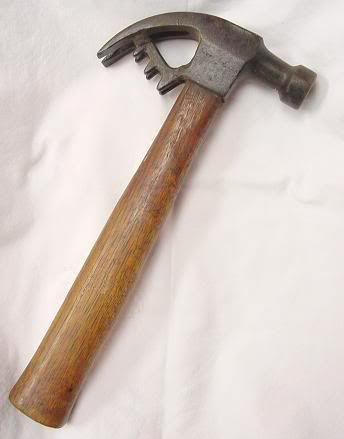
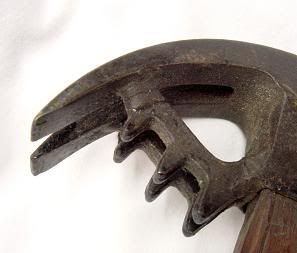
2. A Crandall hammer, a stone dressing tool made from several sharpened spikes which are held together with a frame and wedge. It was used to roughen the face of cut granite so that mortar would adhere to it.

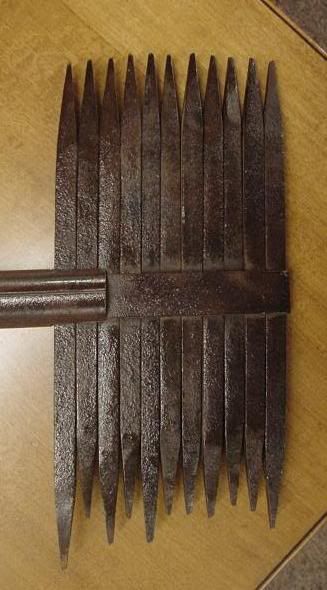
3. A wrench hammer, intended for use by a framing carpenter to tighten the nuts on sill bolts.
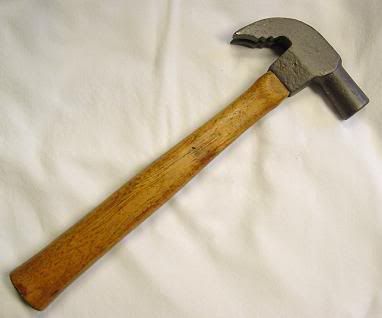
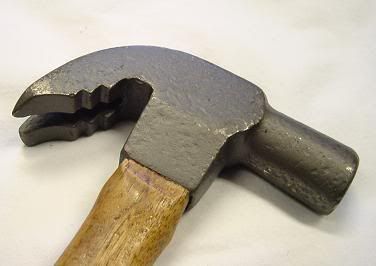
4. A saw set hammer, with a wrest style saw set:
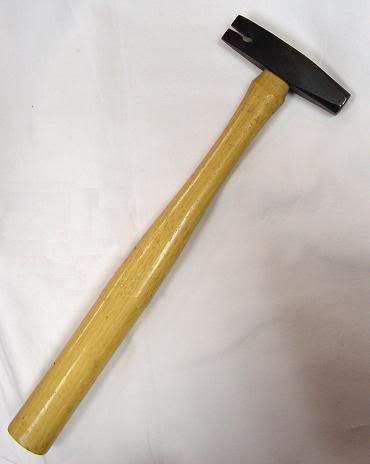
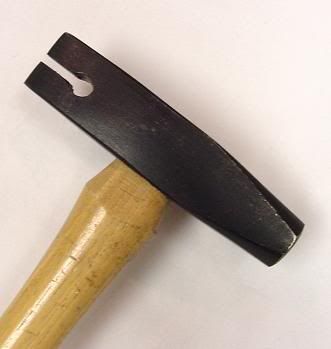
5. This was marked "box maker's hammer", the pointed end was used to pull staples and pry lids off. Someone told me that these are also used by construction workers and that the pointed claw is used to clean out mortises.
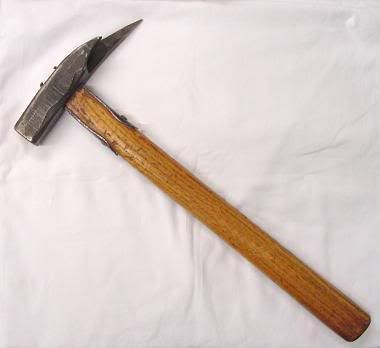
Any type of hammer that has metallic straps that extend over the handle are referred to as strapped hammers:
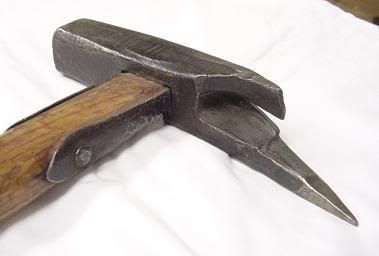
6. A glazier's hammer with a rotating head, used to drive a glazier's point.
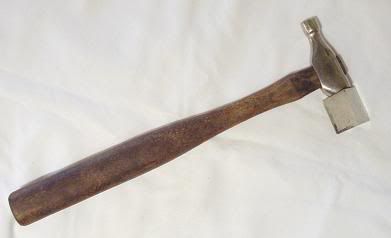
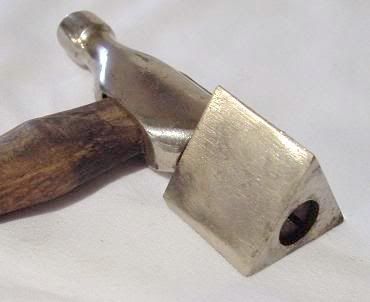
7. A bill poster's hammer or advertising hammer, the clip near the head held a tack and the lower clip held an advertising card, the long handle allowed the card to be posted high above normal reach, so it couldn't be stolen.
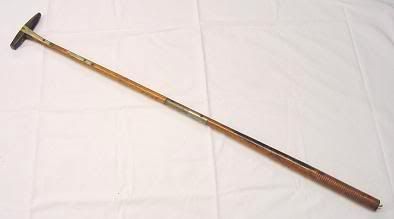
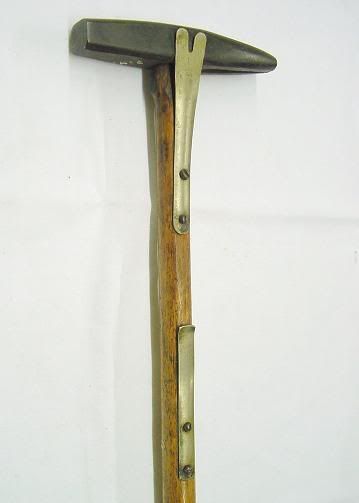
8. A macadam hammer, also called macadamizing hammer, nappan knocker, and napping hammer; used to break up stone for use on a roadway. Several tool experts have told me that before roads were paved, people who couldn't pay their taxes would sit on their front porch and use this type of hammer to break stone and then place it in the roadway in front of their house, they would then be forgiven all or part of their tax debt for helping pave the street.
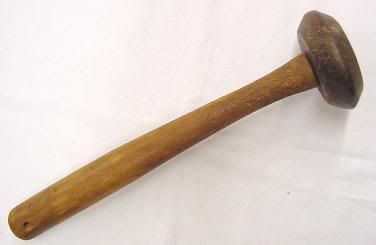
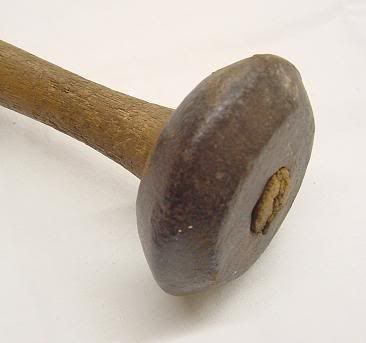
9. A slater's hammer, used for trimming and punching roofing slates.
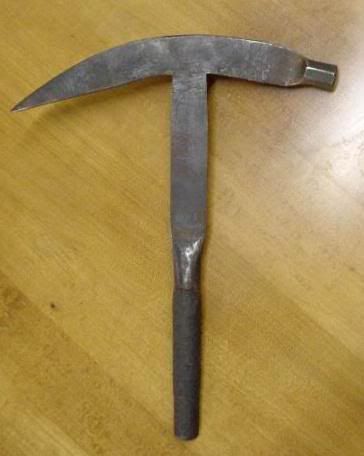
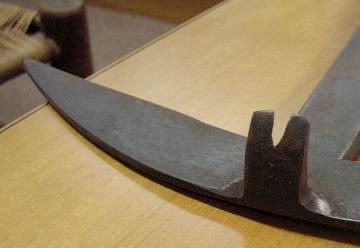
10. A granite cutter's hammer:
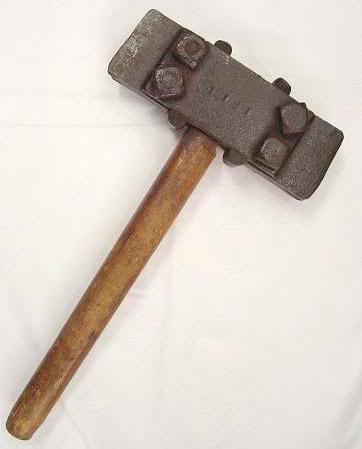

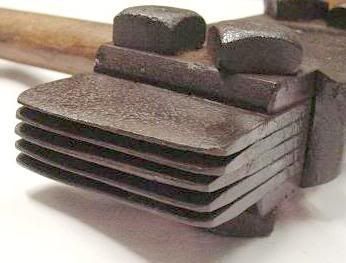
11. A caulking mallet, used for driving ship caulking tools.
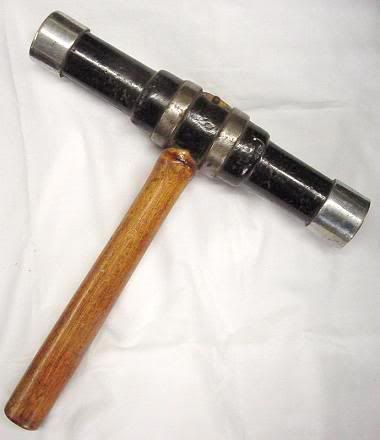
12. A regular hammer with a riveting hammer on the other end, patented in 1867, number 63,106.
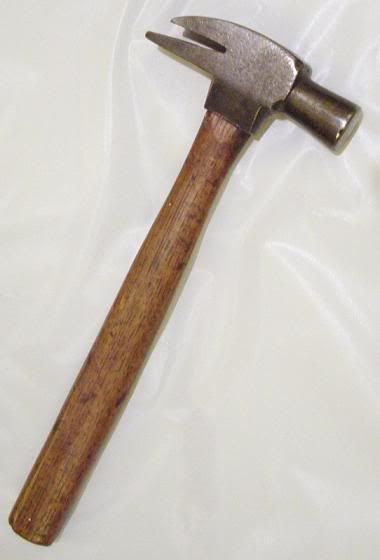
As seen in this patent drawing, the back end can hold a nail:
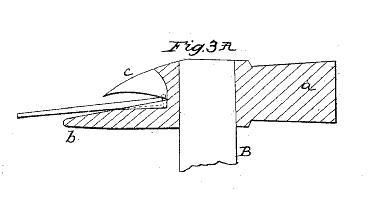
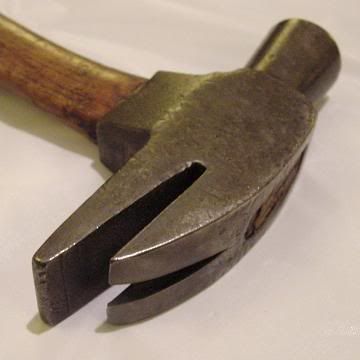
13. A multi-headed hammer, probably a tinsmith's tool:

The rounded part can be removed so that the flat hammer face could be used:

14. A veneer hammer, used for smoothing veneer and squeezing out excess glue.
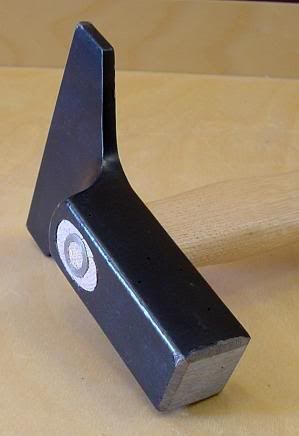
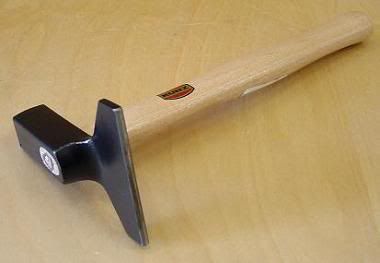
15. Hammers made from lead, babbitt, copper or brass are known as soft faced hammers, they are used for striking finished metal work without marring. These are also useful in an area with powerful magnets, or in an environment where there is danger of explosions caused by sparks.
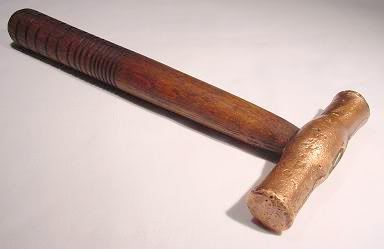
16. A twist-face hammer, used for repairing large circular saw blades.
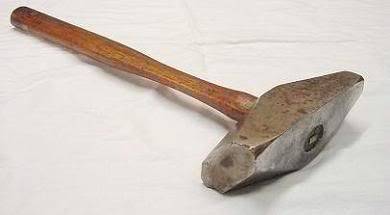
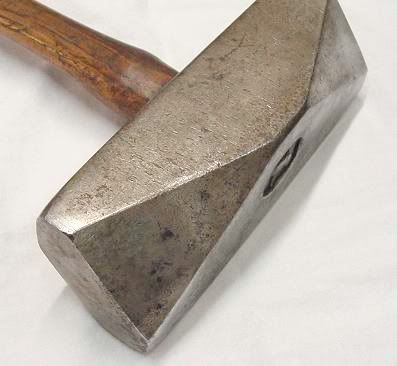
17. A backing hammer, this is a bookbinder's tool used to round the back of a book during the binding process.
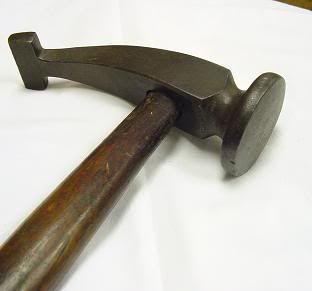
18. An unusual double head hammer, No. 911 1/2, by D. Maydole, Norwich, New York, from the 1890's:

19. A double claw hammer, useful when attempting to pull nails of various lengths, patent number 712,983.
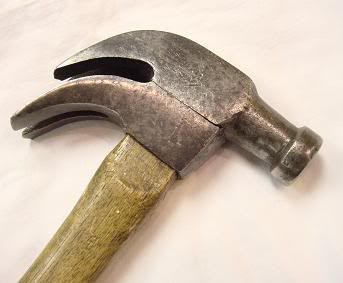
20. Another version of a double claw hammer:
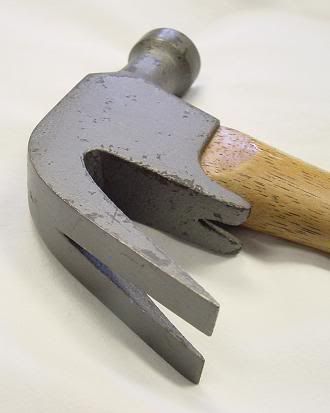
21. A quadruple claw hammer, used for pulling square nails, the fourth claw is the wedge-shaped extension where the claws are normally located.
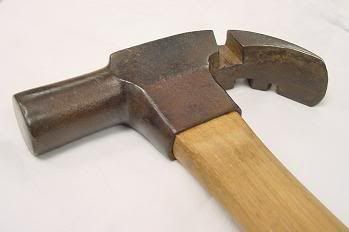

22. Yet another double claw, used for tearing down and repairing buildings, patent number 742,771:
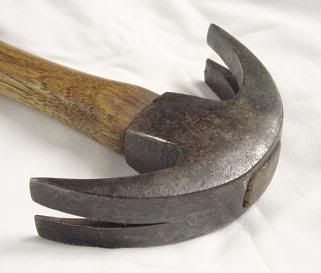
23. A massive engineer's pattern ball peen hammer, the total length of this tool is 28".
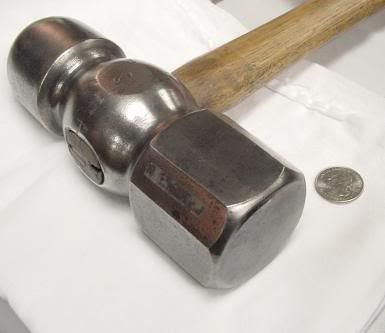
-----
What is it? - Over 1400 unusual items
Animal Trap Quiz - Antique traps